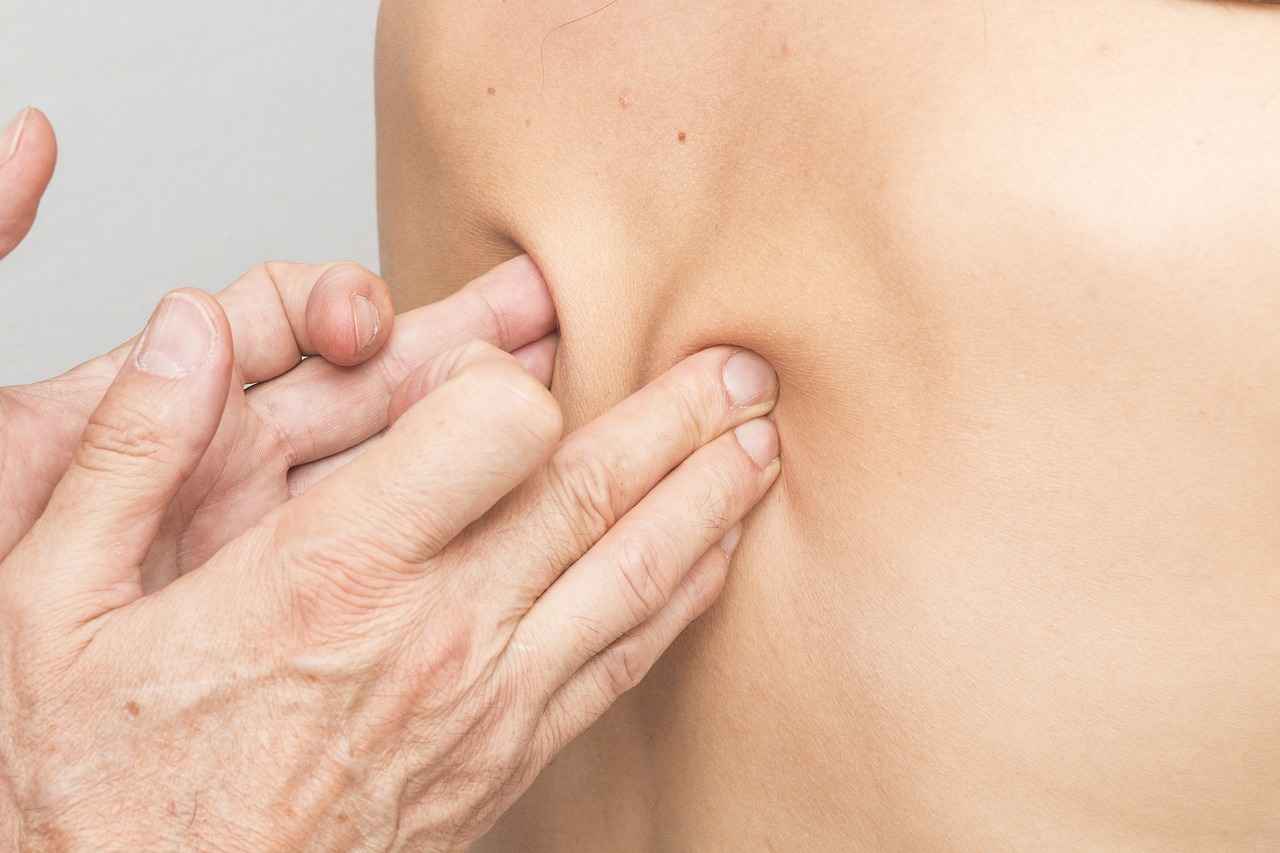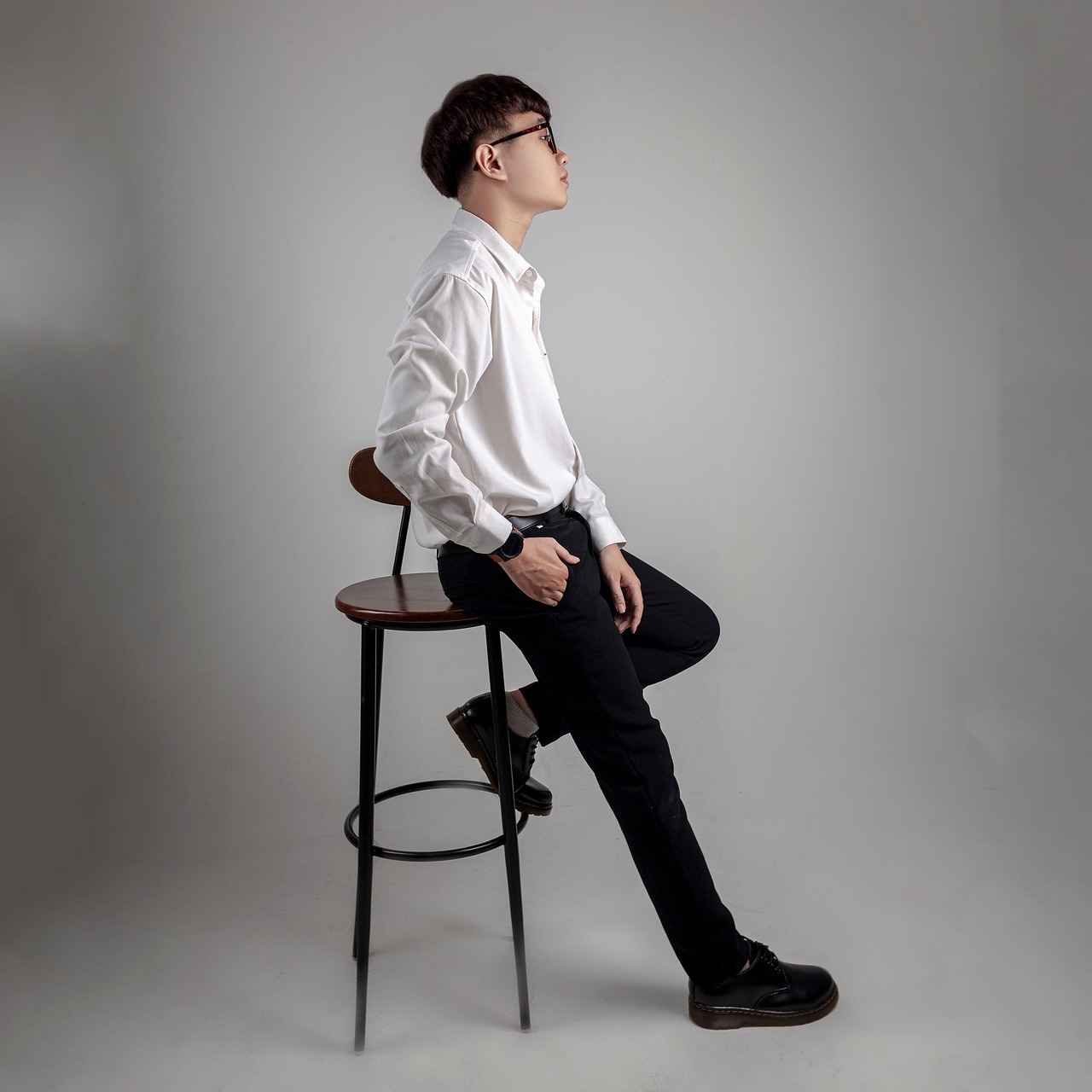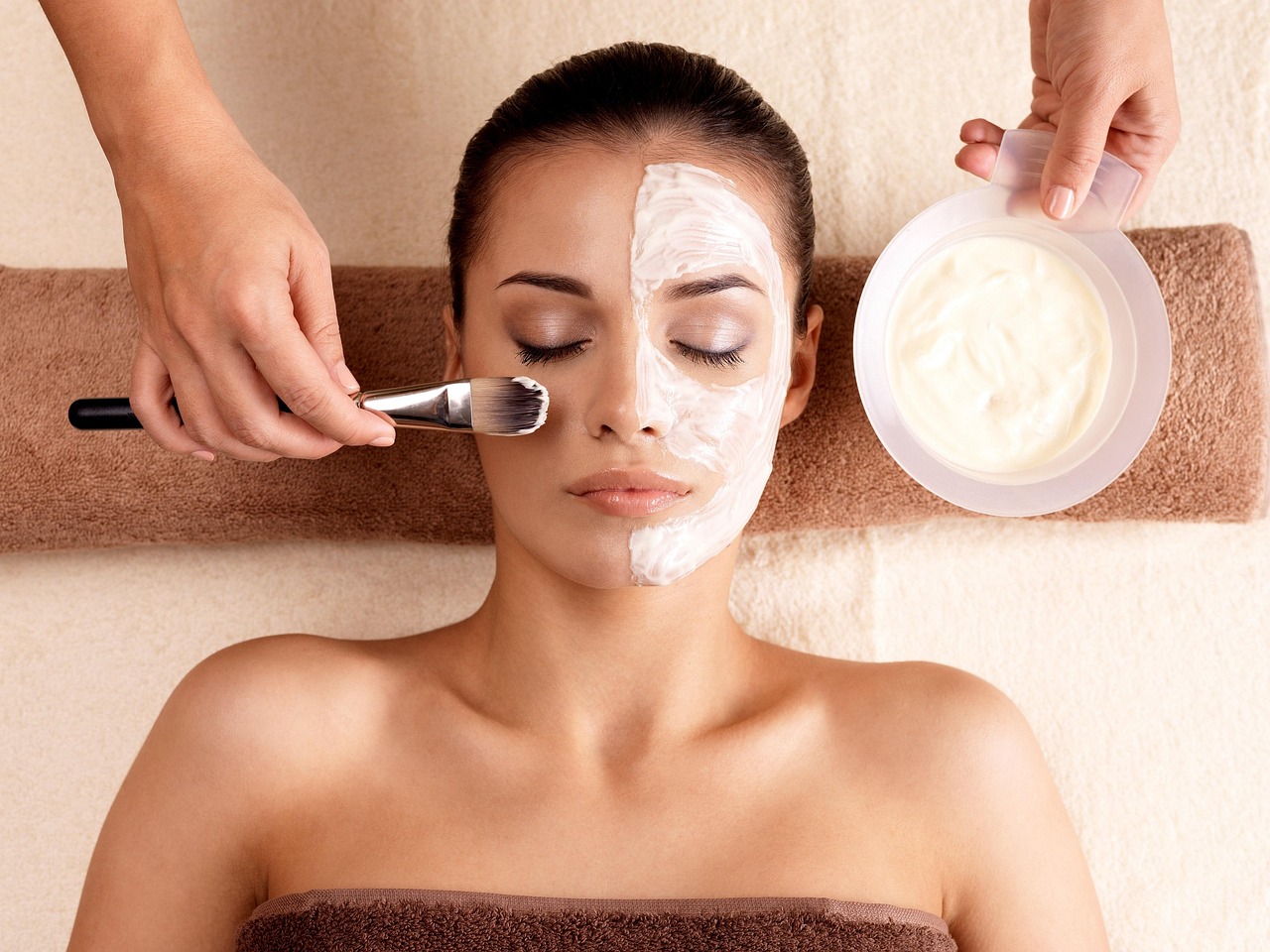Asian massage techniques have been cherished for centuries, offering a pathway to enhanced well-being through the art of touch. These ancient practices are designed to promote relaxation, alleviate stress, and improve overall health. In this article, we will delve into the various methods, benefits, and insights into these time-honored techniques that can significantly elevate your wellness journey.
What Are Asian Massage Techniques?
Asian massage techniques encompass a rich tapestry of practices, each rooted in traditional healing philosophies. These techniques focus on the flow of energy within the body, addressing muscle tension while promoting holistic health. Understanding these diverse methods is essential for anyone looking to incorporate them into their wellness routine.
Benefits of Asian Massage Techniques
- Stress Reduction: Many Asian massage techniques are specifically designed to relieve stress, helping to create a sense of calm and tranquility.
- Improved Circulation: These practices enhance blood flow, which is vital for physical health and vitality.
- Enhanced Flexibility: Techniques often include stretching, which can improve overall flexibility and mobility.
- Mental Clarity: Regular sessions can lead to improved focus and emotional balance, contributing to overall wellness.
Popular Asian Massage Techniques Explained
Several Asian massage methods cater to different needs and preferences. Here are a few notable techniques:
- Tui Na: A traditional Chinese therapeutic massage that combines rhythmic compression and stretching to alleviate pain and balance energy.
- Shiatsu: This Japanese technique uses finger pressure on specific points, promoting relaxation and reducing anxiety.
- Thai Massage: A unique combination of acupressure and yoga-like stretches, emphasizing energy flow and flexibility.
- Ayurvedic Massage: An Indian practice that utilizes specific oils and techniques to balance the body’s doshas, enhancing both physical and mental well-being.
Choosing the Right Massage Technique for You
Selecting the right Asian massage technique involves understanding your wellness goals. Consider what you hope to achieve—whether it’s relaxation, pain relief, or improved flexibility. Additionally, finding a qualified practitioner is crucial. Look for certified professionals who specialize in the technique you wish to explore, ensuring you receive the maximum benefits from your experience.
Incorporating Asian massage techniques into your wellness journey can lead to profound changes in your overall health and well-being. By understanding the various methods and their benefits, you can make informed choices that resonate with your personal health goals.

What Are Asian Massage Techniques?
Asian massage techniques represent a rich tapestry of practices that have been developed over centuries, deeply rooted in the principles of traditional medicine. These techniques are not merely physical manipulations; they are holistic approaches designed to enhance the flow of energy within the body, relieve muscle tension, and promote overall well-being. By understanding these diverse methods, individuals can effectively integrate them into their wellness routines, paving the way for improved health and vitality.
At the heart of Asian massage is the concept of Qi (or Chi), the life force that flows through the body. Techniques such as Shiatsu, Tui Na, and Thai massage focus on manipulating this energy, ensuring it flows freely and harmoniously. Each technique offers unique benefits and approaches, making it essential to explore their distinct characteristics.
- Sensory Experience: Asian massages often incorporate elements such as aromatherapy and soothing music, enhancing the overall experience.
- Mind-Body Connection: These techniques emphasize the importance of mental clarity and emotional balance, which are vital for holistic wellness.
- Personalization: Many practitioners tailor sessions to meet individual needs, ensuring that each experience is unique and effective.
Moreover, the benefits of Asian massage techniques extend beyond mere relaxation. Regular sessions can lead to improved circulation, increased flexibility, and enhanced muscle recovery. By understanding the principles behind these practices, individuals can make informed choices that align with their personal health goals.
Incorporating Asian massage techniques into your wellness journey not only supports physical health but also nurtures mental and emotional well-being. As you explore these ancient practices, you may find a deeper connection to your body and a renewed sense of vitality.

Benefits of Asian Massage Techniques
Asian massage techniques provide a myriad of health benefits that go beyond simple relaxation. These ancient practices, rooted in holistic traditions, are designed to harmonize the body, mind, and spirit. By incorporating these techniques into your wellness routine, you can experience significant improvements in various aspects of health.
- Stress Reduction: One of the most prominent benefits of Asian massage techniques is their effectiveness in reducing stress levels. Techniques like Shiatsu and Thai massage are specifically designed to target tension points and promote relaxation, helping to alleviate anxiety and enhance overall mental well-being.
- Improved Circulation: Many Asian massage methods, such as Tui Na, focus on stimulating blood flow throughout the body. Enhanced circulation not only promotes better oxygen delivery to tissues but also aids in the removal of toxins, contributing to overall health.
- Enhanced Flexibility: Regular practice of Asian massage techniques can lead to improved flexibility. Techniques that incorporate stretching and muscle manipulation, such as Thai massage, help loosen tight muscles and increase range of motion, making daily activities easier and more enjoyable.
- Mental Clarity: The meditative aspects of many Asian massage techniques, including Ayurvedic massage, can help clear the mind and enhance focus. This mental clarity contributes to better decision-making and improved cognitive function.
- Emotional Balance: Engaging in Asian massage can foster emotional stability. The combination of physical touch and mindful practices encourages a sense of calm and balance, which is essential for mental health.
Incorporating Asian massage techniques into your wellness regime can lead to profound changes in both physical and mental health. By understanding and utilizing these practices, you can take significant steps towards a healthier, more balanced lifestyle.
Stress Relief Through Massage
One of the most significant advantages of incorporating Asian massage techniques into your wellness routine is their profound ability to alleviate stress. Practices such as Shiatsu and Thai massage are specifically designed to release built-up tension, promoting a state of relaxation that benefits both the body and mind.
Asian massage methods are deeply rooted in ancient traditions, often focusing on the flow of energy throughout the body. This holistic approach not only addresses physical discomfort but also targets emotional stressors, creating a balanced state of well-being. For instance, Shiatsu employs finger pressure on specific points along the body’s energy pathways, or meridians, which can help in unlocking tension and fostering a sense of calmness. Many individuals report feeling a significant reduction in anxiety levels after just a few sessions.
On the other hand, Thai massage offers a unique experience by combining acupressure with assisted stretching. This technique encourages the release of tight muscles while enhancing flexibility, which can further contribute to stress relief. As practitioners guide you through a series of yoga-like stretches, the body is encouraged to let go of physical and mental strain, resulting in a revitalized state of relaxation.
Moreover, regular sessions of these Asian massage techniques can lead to long-term benefits. Not only do they help in immediate stress relief, but they also promote better sleep patterns and improved emotional resilience over time. As stress is often a contributing factor to various health issues, integrating these practices into your lifestyle can be a significant step toward achieving overall health.
In conclusion, the efficacy of Asian massage techniques in alleviating stress is well-documented, making them an invaluable tool in your wellness journey. Whether you choose Shiatsu, Thai massage, or another method, the benefits of these ancient practices can profoundly enhance your quality of life.
Shiatsu: A Japanese Approach
Shiatsu is a traditional Japanese massage technique that emphasizes the use of finger pressure on specific points along the body’s energy pathways, known as meridians. This method is rooted in the principles of traditional Chinese medicine, focusing on the flow of Qi (energy) throughout the body. By applying pressure to these vital points, Shiatsu aims to release stress and promote a profound sense of calm and well-being.
One of the primary benefits of Shiatsu is its effectiveness in addressing anxiety and tension. Many individuals find that regular sessions help them manage their stress levels more effectively. The technique not only alleviates physical discomfort but also fosters a deeper connection between the body and mind, enhancing overall mental clarity.
Shiatsu practitioners utilize a variety of techniques, including stretching, kneading, and gentle rocking, to stimulate the body’s natural healing processes. This holistic approach encourages the release of endorphins, the body’s natural painkillers, which can lead to an improved mood and a reduction in feelings of anxiety.
Furthermore, Shiatsu can be tailored to meet individual needs, making it suitable for people of all ages and health conditions. Whether you are dealing with chronic pain, recovering from an injury, or simply seeking relaxation, Shiatsu can be a valuable addition to your wellness routine.
Incorporating Shiatsu into your self-care regimen not only enhances physical health but also nurtures emotional well-being. By focusing on the body’s energy pathways, this technique provides a comprehensive approach to achieving balance and harmony in both mind and body.
| Benefits of Shiatsu | Details |
|---|---|
| Stress Relief | Reduces tension and promotes relaxation. |
| Anxiety Management | Helps alleviate feelings of anxiety and promotes emotional balance. |
| Pain Relief | Addresses chronic pain through targeted pressure techniques. |
| Improved Circulation | Enhances blood flow, contributing to overall health. |
In summary, Shiatsu is more than just a massage; it is a holistic practice that fosters a deep sense of well-being. By exploring this ancient technique, you can embark on a transformative journey toward improved health and tranquility.
Thai Massage: A Holistic Experience
Thai Massage is an ancient healing practice that beautifully merges acupressure techniques with assisted yoga postures. This unique form of therapy is not only designed for relaxation but also aims to enhance the body’s natural energy flow. Unlike many other massage styles, Thai massage encourages movement and flexibility, making it a dynamic experience that can significantly aid in stress relief.
At the heart of Thai massage lies the concept of energy lines, known as Sen lines. Practitioners believe that these lines are pathways through which energy flows in the body. By applying pressure to specific points along these lines, the therapist can help release blockages, allowing energy to flow freely. This process not only alleviates physical tension but also promotes a deep sense of mental clarity and emotional balance.
During a typical Thai massage session, clients are often guided through a series of gentle stretches and yoga-like postures. This interactive approach allows for a deeper release of tension, as the therapist assists in stretching the client’s muscles and joints. The result is an invigorating experience that enhances flexibility and improves overall mobility.
Moreover, the benefits of Thai massage extend beyond mere physical relief. Many individuals report feeling a profound sense of calm and relaxation following a session. This holistic approach not only addresses the body but also nurtures the mind and spirit, making it a comprehensive wellness practice.
As you explore the world of Thai massage, consider how it aligns with your personal wellness goals. Whether you seek to relieve stress, improve flexibility, or simply enjoy a unique therapeutic experience, Thai massage offers a rich tapestry of benefits that can enhance your overall health and well-being.
Improved Circulation and Flexibility
Asian massage techniques are renowned for their ability to improve circulation and enhance flexibility, which are vital components of maintaining optimal physical health. These ancient methods, rooted in holistic practices, offer numerous benefits that extend beyond mere relaxation.
One of the most effective techniques is Tui Na, a traditional Chinese massage that employs rhythmic compression and stretching. This technique is designed to stimulate blood flow, which helps in relieving muscle tension and promoting overall vitality. By focusing on specific acupressure points, Tui Na not only enhances circulation but also balances the body’s energy, leading to a profound sense of well-being.
Another popular method is the Swedish massage, which utilizes long, flowing strokes to increase blood circulation. This technique not only helps in loosening tight muscles but also promotes the delivery of oxygen and nutrients to tissues, aiding in recovery and reducing muscle soreness. The gentle yet effective approach of Swedish massage makes it a favorite among those seeking relaxation while simultaneously improving their physical health.
In addition to Tui Na and Swedish massage, techniques like Thai massage also contribute to improved flexibility. This method combines acupressure with assisted yoga stretches, allowing practitioners to experience a deep stretch that enhances flexibility and joint mobility. The dynamic movements involved in Thai massage help in releasing tightness and improving the overall range of motion.
- Benefits of Enhanced Circulation: Better oxygen delivery, reduced muscle soreness, and faster recovery times.
- Benefits of Improved Flexibility: Increased joint mobility, reduced risk of injury, and enhanced athletic performance.
Incorporating these Asian massage techniques into your wellness routine can significantly enhance your physical health. Regular sessions can lead to long-term benefits, including a more flexible body and improved circulation, making them essential for anyone looking to maintain an active lifestyle.

Popular Asian Massage Techniques Explained
Asian massage techniques are diverse, each offering unique benefits and approaches to wellness. Understanding these techniques can greatly enhance your overall health and relaxation experience. Here’s a closer look at some of the most popular methods:
- Tui Na: This traditional Chinese therapeutic massage focuses on stimulating energy flow and balancing the body’s vital forces. Tui Na employs rhythmic compression and stretching to alleviate pain and improve mobility. It is particularly effective for treating musculoskeletal issues.
- Shiatsu: Originating from Japan, Shiatsu uses finger pressure on specific points along the body’s energy pathways, known as meridians. This technique not only helps in relieving stress but also promotes emotional balance and mental clarity. It is ideal for those seeking a deeper connection between body and mind.
- Thai Massage: Known for its dynamic approach, Thai massage combines acupressure and yoga-like stretching. Practitioners guide clients through a series of movements that enhance flexibility and energy flow. This method is perfect for individuals looking to relieve tension while improving their physical range of motion.
- Ayurvedic Massage: Rooted in Indian traditions, Ayurvedic massage focuses on balancing the body’s doshas using warm herbal oils tailored to individual needs. This holistic approach not only nurtures physical well-being but also addresses emotional health, making it a comprehensive wellness solution.
- Hot Stone Massage: While not exclusively Asian, this technique is widely practiced in Asian wellness centers. Smooth, heated stones are placed on key points of the body to relax muscles and improve circulation. The combination of heat and pressure offers a deeply soothing experience.
Each of these techniques caters to different needs, making it essential to understand their unique attributes. Whether you seek relaxation, pain relief, or enhanced flexibility, there is an Asian massage technique that can support your wellness journey.
Tui Na: Chinese Therapeutic Massage
Tui Na is a revered Chinese therapeutic massage technique that has been practiced for centuries, deeply rooted in traditional Chinese medicine. Unlike Western massage styles that often focus on relaxation, Tui Na is a dynamic practice aimed at addressing specific health concerns through a combination of rhythmic compression, stretching, and acupressure techniques.
The primary goal of Tui Na is to balance the body’s energy, known as Qi, which is believed to flow through pathways called meridians. By manipulating these energy pathways, Tui Na practitioners seek to alleviate pain, reduce tension, and promote overall well-being. This makes Tui Na suitable for a wide range of ailments, including:
- Muscle pain and stiffness
- Joint issues
- Stress and anxiety
- Digestive problems
- Headaches and migraines
During a Tui Na session, the practitioner employs various techniques such as kneading, rolling, and pressing to stimulate blood circulation and enhance flexibility. This hands-on approach not only addresses physical discomfort but also encourages the release of emotional tension, fostering a sense of harmony within the body and mind.
One of the unique aspects of Tui Na is its adaptability. It can be tailored to meet individual needs, whether the client seeks relief from chronic pain or simply desires to enhance their overall health. Additionally, Tui Na can be performed fully clothed, making it accessible and comfortable for many individuals.
Incorporating Tui Na into your wellness routine can lead to significant improvements in both physical and mental health. By addressing the root causes of discomfort and promoting energy flow, this ancient practice serves as a powerful tool for achieving holistic well-being.
Ayurvedic Massage: An Indian Tradition
Ayurvedic massage is a time-honored practice rooted in the ancient Indian system of medicine known as Ayurveda. This holistic approach emphasizes the balance of the body’s three doshas—Vata, Pitta, and Kapha—through tailored techniques and specific herbal oils. By harmonizing these doshas, Ayurvedic massage aims to promote optimal health and well-being.
At its core, Ayurvedic massage involves the application of warm, therapeutic oils that are chosen based on an individual’s unique constitution and health concerns. These oils often contain a blend of herbs and natural ingredients known for their healing properties. The massage techniques used can vary widely, incorporating gentle strokes, kneading, and pressure point therapy to stimulate energy flow and release tension.
One of the primary benefits of Ayurvedic massage is its ability to reduce stress and anxiety. The soothing nature of the oils and the rhythmic movements help to calm the mind, making it an effective practice for those dealing with the pressures of modern life. Additionally, this massage technique enhances blood circulation, which is vital for overall health, as it promotes the delivery of oxygen and nutrients to the body’s tissues.
Moreover, Ayurvedic massage can assist in detoxification. The use of specific oils facilitates the removal of toxins from the body, leading to improved digestion and a strengthened immune system. This cleansing process is often complemented by herbal remedies that further enhance the effects of the massage.
In a typical Ayurvedic massage session, clients can expect a personalized experience that addresses their specific needs. Practitioners may begin with a consultation to assess the individual’s dosha and any health concerns. This ensures that the treatment is tailored for maximum effectiveness.
- Promotes Relaxation: The calming effects of the oils and techniques used help to alleviate stress.
- Improves Flexibility: Regular sessions can enhance muscle flexibility and joint mobility.
- Encourages Balance: Supports the body’s natural rhythms and promotes emotional stability.
In conclusion, Ayurvedic massage is not merely a physical treatment; it is a comprehensive approach to well-being that nurtures both body and mind. By integrating this ancient practice into your wellness routine, you can experience profound benefits that extend beyond the massage table.

Choosing the Right Massage Technique for You
Choosing the right massage technique can significantly impact your overall wellness experience. With a multitude of options available, it is essential to select a method that aligns with your unique needs and preferences. Here are some key considerations to help you make an informed decision:
- Assess Your Health Goals: Before diving into the world of Asian massage, take a moment to reflect on your specific health objectives. Are you aiming for stress relief, pain management, or perhaps an increase in flexibility? Understanding your goals will guide you in selecting the most appropriate technique.
- Evaluate Your Physical Condition: Your current physical state plays a significant role in determining which massage technique is suitable for you. For instance, individuals with chronic pain may benefit more from techniques like Tui Na, which focuses on therapeutic pressure, while those seeking relaxation might prefer Shiatsu.
- Consider Personal Preferences: Personal comfort and preferences are crucial when choosing a massage. Some individuals may enjoy the invigorating stretches of Thai massage, while others might find the gentle pressure of Ayurvedic massage more appealing. Think about what you enjoy and feel comfortable with.
- Research Various Techniques: Familiarize yourself with different Asian massage techniques. Each method has unique characteristics and benefits. For example, Shiatsu emphasizes energy pathways, whereas Ayurvedic massage utilizes specific oils tailored to your body type. Understanding these differences can help you make a more informed choice.
- Seek Professional Guidance: Consult with a qualified massage therapist who can provide insights based on your health history and preferences. A professional can recommend the best technique suited to your individual circumstances, ensuring a more effective and enjoyable experience.
Ultimately, selecting the right massage technique is a personal journey. By considering your health goals, physical condition, and personal preferences, you can make a choice that enhances your wellness and promotes a sense of well-being.
Assessing Your Wellness Goals
When embarking on your wellness journey, it is essential to assess your wellness goals before selecting a massage technique. This evaluation is crucial as it helps you determine what you truly want to achieve through massage therapy. Are you aiming for deep relaxation, seeking pain relief, or looking to enhance your flexibility? Each of these objectives requires a different approach, and understanding your specific needs will guide you in making the best choice.
- Relaxation: If your primary goal is to unwind and de-stress, consider techniques like Swedish massage or Shiatsu. These methods focus on soothing the body and mind, promoting a state of tranquility.
- Pain Relief: For those dealing with chronic pain or muscle tension, techniques such as Tui Na or deep tissue massage may be more appropriate. These approaches target specific areas of discomfort, helping to alleviate pain effectively.
- Improved Flexibility: If enhancing your flexibility is the goal, Thai massage or Ayurvedic massage may be beneficial. These techniques incorporate stretching and movement, which can significantly improve your range of motion.
Additionally, it is important to consider your physical condition and any existing health issues. For instance, individuals with certain medical conditions may need to avoid specific techniques or require adaptations to ensure safety and effectiveness. Consulting with a healthcare provider or a qualified massage therapist can provide valuable insights tailored to your unique situation.
Lastly, reflect on your personal preferences. The ambiance, the therapist’s style, and even the type of oils used can greatly influence your overall experience. By aligning your massage choice with your wellness goals, you are more likely to achieve a fulfilling and beneficial outcome.
Finding a Qualified Practitioner
When embarking on your journey to explore the transformative world of Asian massage techniques, is of utmost importance. The right professional can significantly enhance your experience, allowing you to reap the full benefits of these ancient practices.
To begin your search, consider certification and training. Look for practitioners who have completed recognized programs in specific Asian massage techniques, such as Shiatsu, Thai massage, or Tui Na. Certification ensures that the practitioner has undergone rigorous training and understands the essential principles and techniques involved in these practices.
Experience is another crucial factor. A practitioner with a proven track record in the specific technique you wish to explore can offer insights and personalized approaches tailored to your needs. Ask about their years of practice and any specialized training they may have received. This information can help you gauge their expertise and comfort level with various techniques.
Additionally, consider the practitioner’s approach to wellness. A holistic perspective that emphasizes the connection between body, mind, and spirit can enhance your massage experience. Look for professionals who prioritize your overall well-being and are willing to discuss your individual health goals.
It is also beneficial to read client reviews and testimonials. Feedback from previous clients can provide valuable insights into a practitioner’s effectiveness, professionalism, and overall approach. Websites and social media platforms often feature reviews that can help you make an informed decision.
Lastly, trust your instincts. When you meet a practitioner, pay attention to how comfortable you feel in their presence. A strong rapport can significantly impact your overall experience and the effectiveness of the treatment.
In summary, finding a qualified practitioner is essential for experiencing the full benefits of Asian massage techniques. By focusing on certification, experience, approach to wellness, client reviews, and personal comfort, you can ensure a rewarding and enriching experience on your wellness journey.
Frequently Asked Questions
- What are the main benefits of Asian massage techniques?
Asian massage techniques offer a plethora of benefits, including stress relief, improved circulation, enhanced flexibility, and emotional balance. They aim to promote overall wellness by addressing both physical and mental health.
- How do I choose the right Asian massage technique for my needs?
Choosing the right technique depends on your personal wellness goals. Consider whether you seek relaxation, pain relief, or improved flexibility. Assessing your needs will help you find the most suitable method for your journey.
- Are Asian massage techniques safe for everyone?
While many people can benefit from Asian massage techniques, it’s essential to consult with a healthcare professional if you have specific health conditions or concerns. A qualified practitioner can help tailor the massage to your needs.
- How can I find a qualified practitioner for Asian massage?
Look for certified professionals with experience in the specific Asian massage technique you’re interested in. Checking reviews and asking for recommendations can also help ensure you find a skilled practitioner.
- How often should I receive Asian massage treatments?
The frequency of treatments can vary based on individual needs and goals. Generally, regular sessions can enhance the benefits, but it’s best to discuss a personalized plan with your practitioner.












